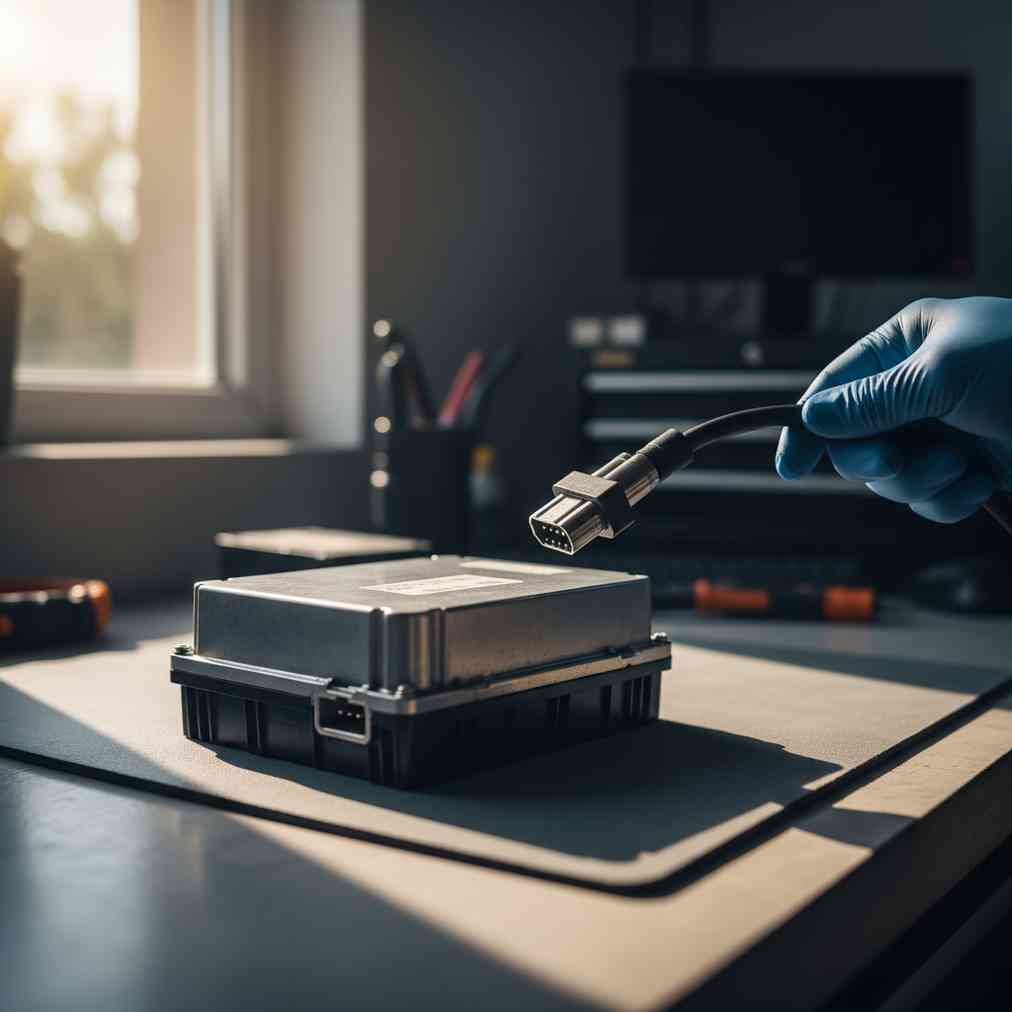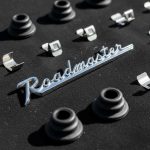Understanding ECU and Immobilizer Compatibility
When your vehicle’s Engine Control Unit (ECU) or immobilizer fails, buying a used replacement can save you hundreds or even thousands of dollars compared to purchasing new parts. However, compatibility is absolutely critical when dealing with these sophisticated electronic components. Unlike simpler mechanical parts, ECUs and immobilizers require precise matching to your vehicle’s specifications and often need complex programming procedures.
Modern vehicles integrate their immobilizer systems directly with the ECU, creating a security network that prevents unauthorized engine starts. This means that simply swapping in a used ECU won’t work without proper reprogramming and synchronization with your vehicle’s existing keys and security systems.
The Financial Benefits of Buying Used ECU Components
The primary advantage of purchasing used ECUs and immobilizers is the significant cost reduction – often 50-70% less than new OEM parts. For owners of older vehicles where new parts might cost more than the car’s value, used components offer a viable repair solution. Additionally, for discontinued models, finding a junkyard with compatible parts may be your only option.
- Cost savings: 50-70% less than new OEM parts
- Availability: Often the only option for discontinued vehicles
- Environmental benefits: Promotes automotive recycling and waste reduction
- Quick sourcing: Available immediately from salvage yards
Critical Compatibility Factors to Consider
Before purchasing any used ECU or immobilizer, you must verify several critical compatibility factors. Even small differences in part numbers, firmware versions, or security configurations can result in complete system failure or programming impossibility.
| Compatibility Factor | What to Verify | Consequences of Mismatch |
|---|---|---|
| Exact Part Number | Match ECU part number precisely | Complete incompatibility, no-start condition |
| Vehicle VIN Range | Ensure ECU supports your VIN range | Programming failures, immobilizer lockout |
| Engine Specifications | Match engine size, type, and configuration | Poor performance, emission failures |
| Transmission Type | Verify manual vs automatic compatibility | Transmission control issues |
| Security System | Match immobilizer generation/type | Permanent security lockout |
Programming Requirements and Challenges
Installing a used ECU is rarely a simple plug-and-play operation. Most units require comprehensive reprogramming to work with your specific vehicle. The complexity varies significantly between manufacturers and model years, with newer vehicles typically requiring more sophisticated programming procedures.
According to automotive programming specialists, successful ECU replacement depends heavily on proper VIN synchronization and immobilizer data matching. Without these steps, you’ll likely face startup failures or complete system lockouts.
Professional Programming Options
- Dealership programming: Most comprehensive but expensive option
- Automotive locksmith services: Specialized OEM programming tools for efficient reprogramming
- Independent repair shops: May have access to aftermarket programming equipment
- Mobile programming services: Convenient on-site programming solutions
DIY Programming Possibilities
Some older vehicle models allow limited DIY programming capabilities, particularly for key programming when at least one working key remains. Honda immobilizer programming tutorials demonstrate that certain procedures can be completed using simple key cycling sequences or basic OBD procedures.
However, modern vehicles with advanced security systems typically require professional-grade tools and expertise. Smartphone-connected programming devices are making some procedures more accessible to DIY enthusiasts, though their capabilities remain limited compared to professional equipment.
Comprehensive Evaluation Checklist
Use this detailed checklist when evaluating any used ECU or immobilizer to minimize risks and ensure compatibility:
Pre-Purchase Verification
- Obtain exact part numbers from your original ECU/immobilizer
- Compare part numbers meticulously with the used unit
- Verify vehicle fitment for precise make, model, year, and engine type
- Research programming requirements for your specific vehicle
- Identify necessary tools or services for programming and installation
Physical Inspection Protocol
- External damage assessment: Check for cracks, deep scratches, or impact marks
- Connector integrity: Ensure all pins are straight and free from corrosion
- Water damage indicators: Look for stains or corrosion suggesting submersion
- Tampering evidence: Check for broken seals or non-factory modifications
- Component completeness: Verify all external components are present
Seller and Service Verification
- Reputation assessment: Purchase from established auto recyclers with good reviews
- Testing documentation: Ask for test results or operational history
- Warranty coverage: Inquire about return policies or limited warranties
- Programming services: Check if seller offers ECU reset or pre-programming
- Technical support: Ensure availability of installation guidance
Understanding Immobilizer Systems
Modern immobilizer systems create complex security networks that extend beyond simple key recognition. These systems often involve multiple components working together, including the ECU, Body Control Module (BCM), and dedicated immobilizer modules. Technical documentation shows that successful ECU swapping requires understanding these interconnected systems.
“When it comes to upgrading or repairing your vehicle, acquiring a previously owned Engine Control Module may seem like a cost-effective solution, but it is important to carefully weigh the benefits and drawbacks before making a decision.”
– Automotive Industry Expert
The complexity of immobilizer integration means that even compatible ECUs may require extensive programming procedures. Some systems store security data in multiple locations, requiring synchronized programming across several modules simultaneously.
Potential Risks and How to Mitigate Them
Purchasing used ECUs carries inherent risks that extend beyond simple mechanical failures. Electronic components can fail without warning, and their complex internal systems make thorough testing difficult without specialized equipment.
| Risk Factor | Potential Impact | Mitigation Strategy |
|---|---|---|
| Unknown History | Hidden damage or previous repairs | Buy from reputable sources with documentation |
| Programming Lockout | ECU locked to previous vehicle VIN | Verify unlock/reset capabilities before purchase |
| Partial Functionality | Some features work, others fail intermittently | Request extended warranty or return period |
| Security System Conflicts | Immobilizer rejects reprogramming attempts | Confirm security system compatibility |
| Firmware Incompatibility | Software versions don’t match vehicle requirements | Verify firmware version compatibility |
Modern Programming Tools and Techniques
The automotive industry has seen significant advances in programming tools and techniques, making ECU and immobilizer programming more accessible. Professional diagnostic equipment now offers comprehensive programming capabilities that were once exclusive to dealerships.
Recent developments include smartphone-connected devices that can perform basic programming functions through OBD-II interfaces. However, these consumer-grade tools have limitations compared to professional equipment, particularly when dealing with advanced security systems or complex programming scenarios.
Professional Programming Equipment
- OEM factory tools: Manufacturer-specific programming systems
- Multi-brand platforms: Universal programming solutions for multiple manufacturers
- Specialized immobilizer tools: Dedicated security system programming equipment
- J2534 Pass-Through devices: Standardized programming interfaces
Step-by-Step Installation Process
While specific procedures vary by vehicle, the general installation process follows predictable steps. DIY enthusiasts should understand that proper preparation and methodology are crucial for success.
Pre-Installation Preparation
- Document original settings: Record all current ECU parameters and codes
- Gather programming tools: Ensure access to necessary equipment and software
- Backup existing data: Save original immobilizer and key data when possible
- Research procedures: Review vehicle-specific programming sequences
- Prepare workspace: Ensure clean, static-free environment for installation
Installation and Programming Sequence
- Physical installation: Carefully connect the used ECU with proper torque specifications
- Initial system check: Verify basic electrical connections and communication
- VIN programming: Update ECU with correct vehicle identification
- Immobilizer synchronization: Program security system and key recognition
- System calibration: Complete programming with vehicle-specific parameters
- Final testing: Verify all systems operate correctly
When Professional Help is Necessary
While some ECU installations can be completed by experienced DIY mechanics, many situations require professional intervention. Automotive programming experts recommend professional assistance in several scenarios:
- Complete key loss: When no working keys exist for programming reference
- Security system lockouts: When immobilizer systems reject programming attempts
- Complex vehicle networks: Modern vehicles with extensive CAN bus integration
- Dealer-only procedures: Manufacturers requiring specific authorization codes
- Multiple system integration: When ECU connects to numerous vehicle systems
Professional services typically offer warranties on their programming work and have access to the latest software updates and security protocols. For valuable vehicles or critical repairs, the additional cost of professional programming often provides worthwhile peace of mind.
Cost Analysis: Used vs. New Components
Understanding the total cost of ECU replacement helps make informed decisions between used and new components. While used parts offer significant savings, additional costs for programming, potential compatibility issues, and reduced reliability must be considered.
| Cost Factor | Used ECU | New ECU |
|---|---|---|
| Initial Part Cost | $200-800 | $800-3000 |
| Programming Services | $150-400 | $100-300 |
| Potential Compatibility Issues | $0-500 | $0 |
| Warranty Protection | Limited/None | 1-3 Years |
| Installation Time | 2-8 Hours | 1-3 Hours |
Future Trends and Considerations
The automotive industry continues evolving toward more sophisticated electronic systems, making ECU and immobilizer compatibility increasingly complex. Future vehicles will likely feature even more integrated security systems, potentially making used component swapping more challenging.
However, advances in programming tools and diagnostic equipment are also making professional-level capabilities more accessible. Independent repair shops and automotive locksmiths now have access to tools that rival dealership equipment, providing more options for ECU programming services.
Making the Right Decision
Buying used ECUs and immobilizers can provide substantial savings for vehicle repairs, but success depends on careful evaluation, proper compatibility verification, and appropriate programming procedures. The key to success lies in thorough preparation, realistic expectations, and access to proper programming resources.
Before making your purchase, consider your technical capabilities, available resources, and the critical nature of these components in your vehicle’s operation. When in doubt, consulting with automotive professionals can help ensure your repair project succeeds while avoiding costly mistakes.
Remember that while used components offer attractive cost savings, they also require more comprehensive evaluation and potentially complex installation procedures. If you need immediate assistance with parts availability or want to explore other repair options, consider getting a cash for cars online quote to understand your vehicle’s current value versus repair costs.
Whether you choose used or new components, understanding ECU and immobilizer systems will help you make informed decisions and communicate effectively with repair professionals. The investment in proper evaluation and programming typically pays dividends in reliable vehicle operation and avoided future problems.





Leave a Reply
You must be logged in to post a comment.